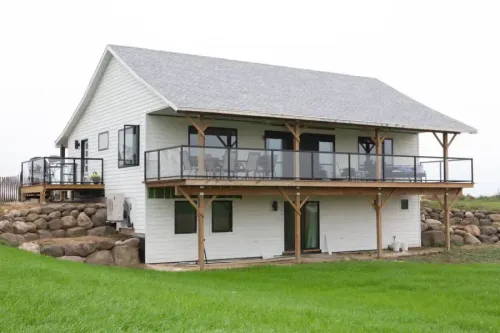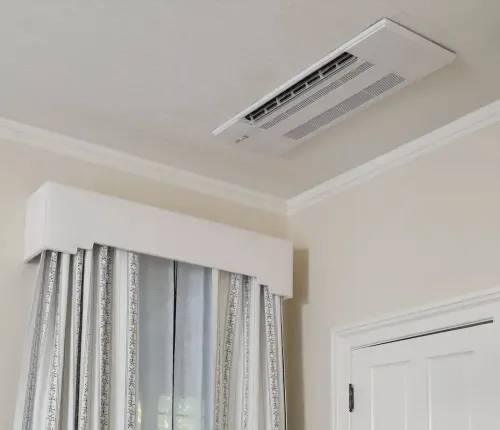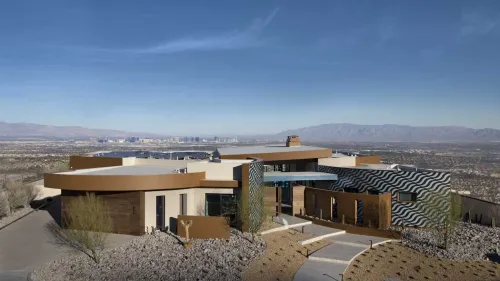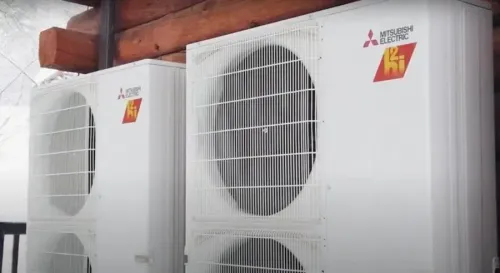Project Location: Garland, Texas
Completion Date: May 2014
Challenge
Selecting an HVAC system for a major rehab hoping to achieve Zero Energy Ready Home (Zerh) CertificationSolution
Variable-Capacity Heat Pump from Mitsubishi ElectricResult
The country’s first Zerh-certified renovation, an inspired neighborhood and one very satisfied homeowner
A 1953 suburban house in Garland, Texas, is making waves. It’s the first home Bonnie Sanchez, veteran and vehicle inspector, has ever owned. It’s also the country’s first “deep rehab” home to earn certification from the U.S. Department of Energy’s (Doe) Zero Energy Ready Home program. Certified homes are at least 40 to 50 percent more energy-efficient than a typical new home, with a Home Energy Rating System (HERS) score in the low- to mid-50s. HVAC is a big part of that accomplishment in any house, so it’s no surprise that a ductless heating and air conditioning system from Mitsubishi Electric was installed in the Sanchez home.
For Sanchez, the story started with house hunting. “My kids are grown, and I’ve got grandkids. I figured, well, it’s about time to own a home. I looked at this house and liked the layout and yard, but it needed some work to pass VA standards.”
While Sanchez was thinking about renovations, so was homebuilder Steve Brown, president, Carl Franklin Homes / Green Extreme Homes Cdc, Lewisville, Texas. Brown wasn’t picturing a regular renovation, though. He was picturing a renovation that would result in a home so energy-efficient that a renewable energy system could offset all or most of its annual energy consumption. Brown and 11 builders from around the country “with the same love for getting as close to zero as possible” had recently met with Sam Rashkin, chief architect of the U.S. Doe Building Technologies Office. “Sam wanted a deep rehab. We have a base stock of 50s/60s/70s homes around America. These homes of course were not built to be energy-efficient. So the 12 of us were talking about working on an older house and seeing what it would take to get it to zero. I had a house in my asset base, so I raised my hand and said, ‘Sure, we’ll do one.’”
The house in Brown’s asset base was Sanchez’s future home, and it presented the team with quite the challenge. “We had to strip the house down to the bare studs, rewire it and replumb it. The living area needed to be literally cocooned in insulation. Then we needed fresh air and the ability to cool and heat it, so HVAC is a big part of the picture,” said Brown.
When selecting the heating and air conditioning system, Brown said it “needed to be energy-efficient. It was also important to us to not have any equipment or ducts in the attic since we didn’t want to condition that space.” The house’s layout also contributed to the system selection: “Because the home is cut up, the rooms are very static. There’s three separate closed-off bedrooms, a hallway that’s closed off, a living room that’s closed off and a kitchen that’s closed off. With Texas summers, we need to make sure we get enough cool air flowing to the back bedrooms on the exterior of the house. It can get pretty hot in Texas!”
Brown’s team decided that going with a ductless system would meet their needs and provide comfort throughout the 1,270 square-foot house. “We then compared three systems: Mitsubishi Electric, Daikin and Lg. We’d used Daikin before but the blowers are a little loud. Mitsubishi Electric is whisper-quiet and it has good circulation pattern. We’re getting a throw of 20 feet. We also liked the green tea filters. So when we balanced cost with features, we had the best fit with Mitsubishi Electric.”
Brown said that during installation, “neighbors came over and asked to see the house. We’d show them around and tell them about getting to “zero energy ready.” They were really excited about the work, and I noticed that some started doing improvements to their own homes and yards.”
In the year since project completion, the home has continued to impress—especially with low utility bills. Or as Sanchez said, with “ridiculously low utility bills. I don’t bother shutting anything off and my bill was $172 last month. One month I really controlled my usage—turning off the systems when I wasn’t home—to see just how low it can go. It was $37 that month.”
On average, Sanchez pays $102 a month for electricity. The U.S. Energy Information Administration’s most recent energy survey shows Texas residents pay an average of $180 a month for energy, and Brown said that Sanchez’s immediate “neighbors are running $300 to $400 a month.”
This reduction in cost comes at no reduction in comfort, especially in terms of the HVAC system’s discrete operation. “You don’t hear it. You can’t even tell it’s on,” said Sanchez. She also appreciates the personalized comfort afforded by having multiple zones. “If I don’t want to cool the whole house, I can just heat or cool a single room. Every room has their own remote control. You control the fan, the speed of the fan, the direction of the fan. It’s just amazing.”
The results have also impressed Brown. “This was our first time using the Mitsubishi Electric system and we’re extremely pleased with it. In fact, we’ve used the system since. I think about how traditional systems are cheaper upfront but you don’t get the same performance or cost savings. Maybe a homeowner spends $100 more a month in mortgage for ductless, but then saves $200 a month on utilities; so really they’ve saved $100 a month.”
For Sanchez, that savings—and really the whole experience—is “a blessing. I absolutely love my home. Sometimes I still pinch myself.”
Project Team
- Homeowner: Bonnie Sanchez
- Builder: Carl Franklin Homes / Green Extreme Homes Cdc, Lewisville, Texas
Equipment Installed
- (1) MXZ Outdoor Unit
- (5) MSZ Wall-mounted Indoor Units









